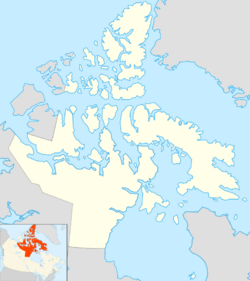Brevoort Island facts for kids
| Geography | |
|---|---|
| Location | Northern Canada |
| Coordinates | 63°30′N 64°20′W / 63.500°N 64.333°W |
| Archipelago | Canadian Arctic Archipelago |
| Area | 271 km2 (105 sq mi) |
| Administration | |
|
Canada
|
|
| Territory | Nunavut |
| Region | Qikiqtaaluk |
| Demographics | |
| Population | Uninhabited |
Brevoort Island is a small island in Canada. It is located in the Labrador Sea, just off the eastern coast of Baffin Island. This island is part of Nunavut, a large territory in northern Canada. It is also a member of the Canadian Arctic Archipelago, a huge group of islands in the Arctic. Brevoort Island lies north of Cape Murchison, across from the Cumberland Peninsula. No one lives on Brevoort Island.
Contents
Geography
Island's Size and Shape
Brevoort Island covers an area of about 271 square kilometers (105 square miles). It is about 46 kilometers (29 miles) long. The island's width varies, usually between 5 and 7 kilometers (3 to 4 miles).
Inside the Island
The middle part of Brevoort Island is quite hilly. Most of these hills are made of a type of rock called granite.
Military Use
Early Warning Station
Brevoort Island is home to a special site known as BAF-3. This site was once part of the Distant Early Warning Line, often called the DEW Line. The DEW Line was a chain of radar stations built across the Arctic during the Cold War. Their job was to detect if any aircraft were flying over the North Pole towards North America.
Modern Communication Site
Today, BAF-3 is part of the North Warning System. This is a modern system that replaced the DEW Line. The site on Brevoort Island is a "rearward communications relay station." This means it helps send messages and information to other places. It does not have a radar, but it uses microwave radio to relay communications.
See also
 In Spanish: Isla Brevoort para niños
In Spanish: Isla Brevoort para niños



